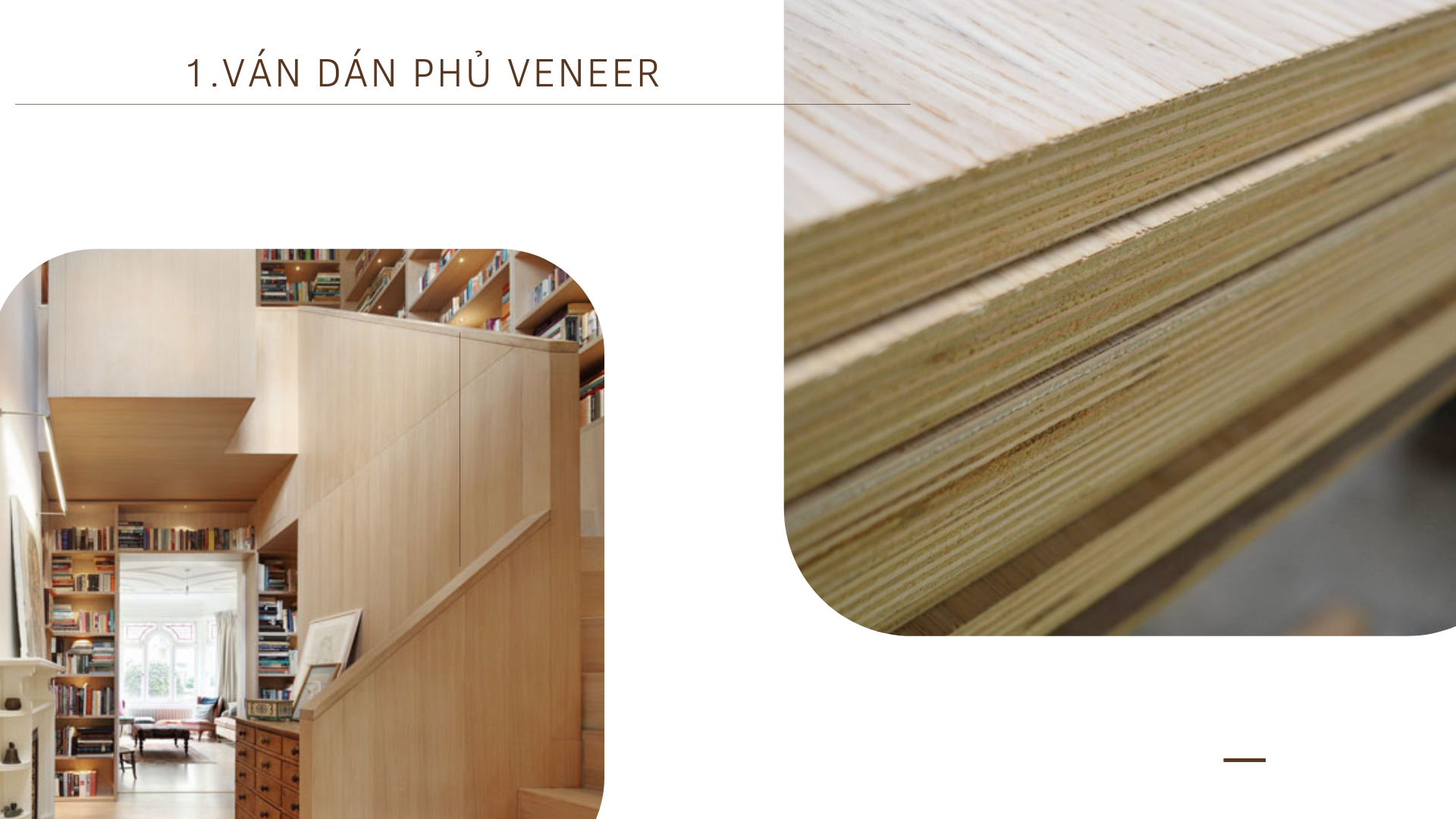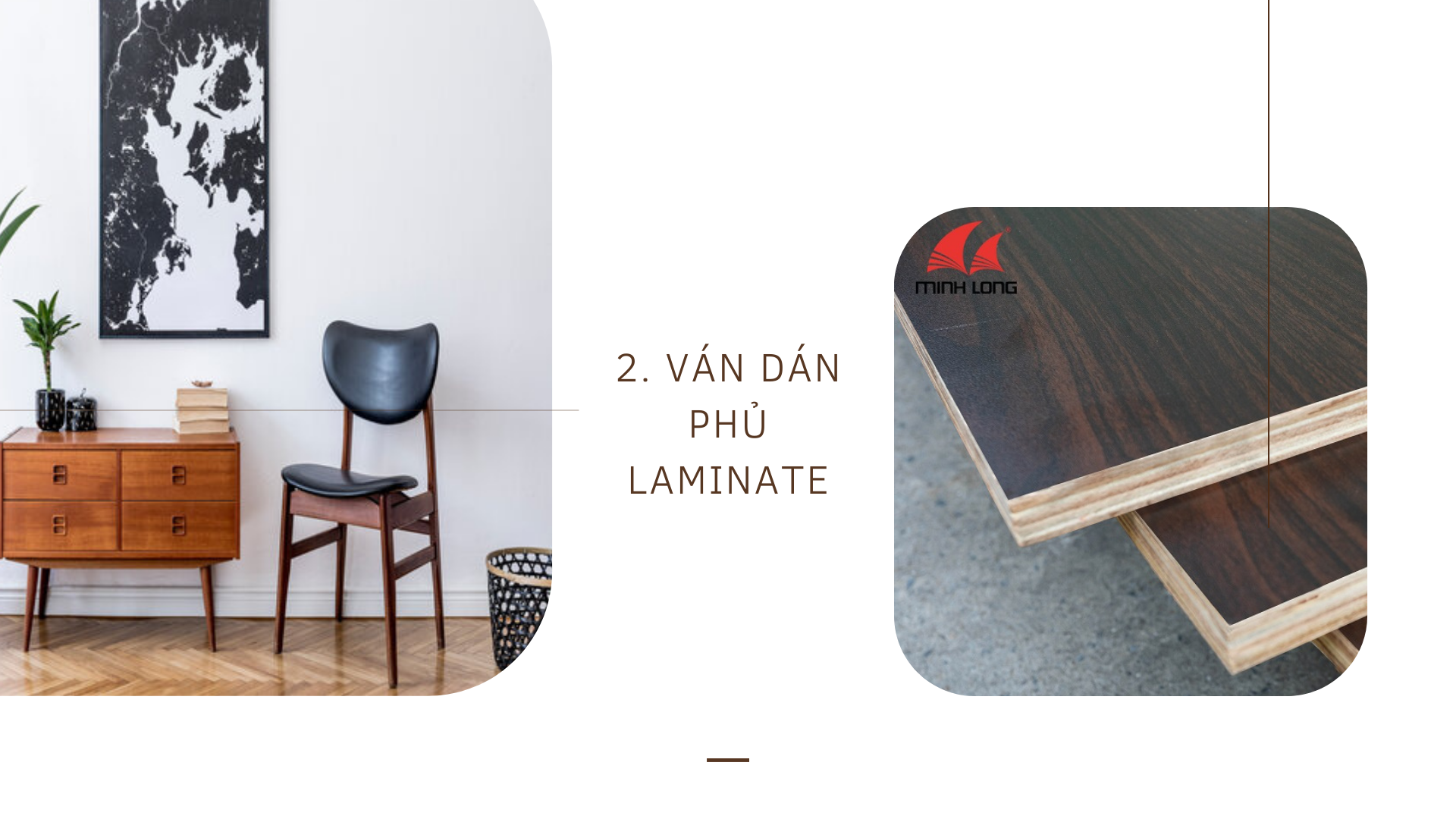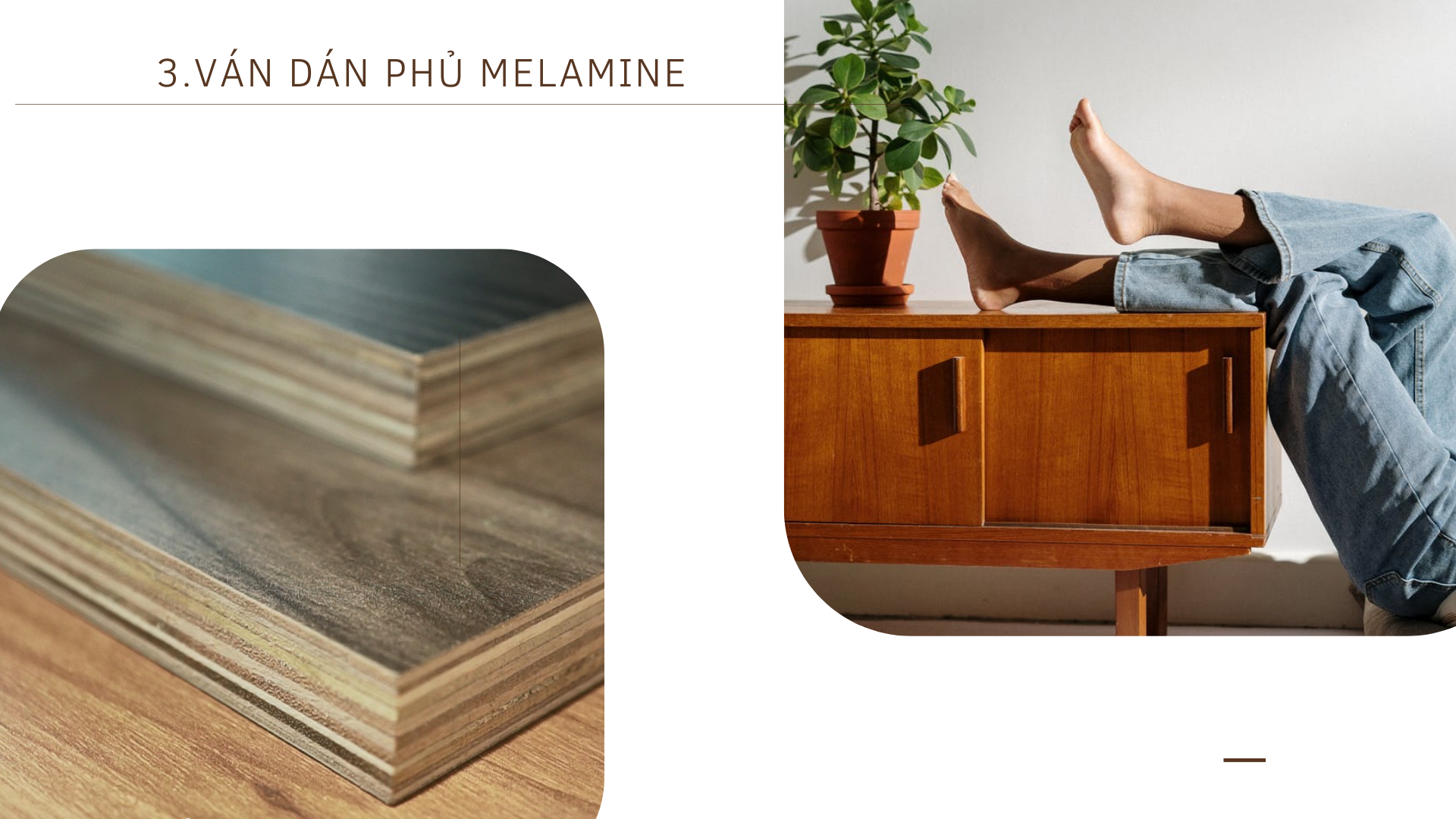Just like ordinary industrial wood such as chipboard, MDF, HDF, plywood can be covered with many different types of surfaces to increase value when applied to the interior.
-
Plywood covered with veneer
Veneers are thin slices of wood, usually thinner than 3mm, that are glued to core panels to produce flat parts such as doors, floors and furniture parts. This is a surface that is highly appreciated for its aesthetic value when it has the original beauty of natural wood and solves the problem economically at a much cheaper cost than solid wood.

In fact, plywood core is also manufactured from veneer. The odd wood layers are arranged perpendicularly in the direction of the wood grain, bonded together by adhesives during pressing at standard temperature and pressure. Therefore, the ordinary plywood itself has a veneer surface. However, for interior application, the top layer of laminated wood must have higher quality and aesthetics, or the surface layer is specific types of wood such as oak, walnut, etc., depending on the needs of furniture.
-
Plywood covered with laminate

Laminate, also known as HPL sheet, consists of 3 layers:
Overlay layer: this is pure cellulose coated on top to create shine, resistant to scratches, shocks, chemicals, as well as agents from the environment and living processes.
Decorative paper layer: this layer of decorative paper dipped in melamine glue is decisive for the aesthetics of the laminate. Under high temperature and pressure in the pressing process, the overlay layer on top will melt and adhere to the paper underneath, so the color of the laminate is always stable.
Layers of kraft paper: many layers of kraft paper pressed together are the final part of the laminate. The thickness of the sheet is mainly thanks to these layers. Therefore, laminate can be applied independently when not pressed on the board.
-
Plywood covered with Melamine
It can be said that melamine is the surface that is most interested in when it comes to plywood for furniture. Decorative paper dipped in melamine glue is a background paper that has been textured and colored, bringing aesthetics to the board and protecting furniture from external influences to the wood core.

Compared to most other types of surfaces, this is a much more economical option because of its reasonable price and diverse design. Although plywood has been invented for a long time, in the past, raw boards were often only used in construction structures, packaging, … and a few for interiors because of limited aesthetics. Therefore, melamine surface coating is a new step, increasing the value of this type of plywood in life. The melamine faced plywood is mainly involved in 3 main categories: ceiling, wall cladding and interior products. Currently, in many countries around the world such as Japan, Korea, the US, etc., the demand for this material is increasing, that’s why the promotion of production of materials and furniture from plywood is increased. melamine is opening up a great opportunity for the furniture industry.
-
Plywood covered with V No.
It can be said that this is a perfect version to replace veneered plywood, even natural wood. The V-side is also melamine decorative paper, but the EIR effect feels many times more realistic and vivid. Each color code V No. has a unique beauty that is not duplicated, meticulously designed to bring the most complete and perfect sheet of material. Therefore, when combined with plywood with many outstanding advantages, it will bring comprehensive value in terms of quality, aesthetics, fashion as well as friendliness and sustainability.
